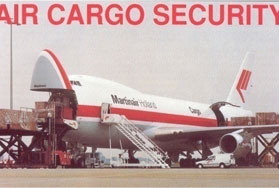
The X-ray Interpretation Training Class allows each student to improve his X-ray interpretation skills while maintaining a constant state of readiness, by providing real-world simulation of the X-ray screening process. X-ray simulations are used as part of the training to demonstrate and evaluate how to analyse X-ray images. As part of the class, the student is exposed to a wide variety of X-ray images and he will have to analyse it to determine if it contains any threats. To successfully complete the course, the student needs to complete one X-ray Interpretation Practice and pass the X-ray Interpretation Final Exam.
The student may use a variety of features such as zoom, colour, inorganic strip, organic strip, black & white, to modify the X-ray image. After analysing the X-ray image, the student has the option of passing an X-ray image that is clear of threats, inspecting if it contains a possible threat, and holding if it contains an obvious threat. If the hold button is pressed, a pushpin will appear and the student will be instructed to mark the threat within the X-ray image. The student is not only scored based on the number of correct decisions, but also on the path followed to arrive at those decisions.
Key Features
- Individualised, self-paced instruction
- Secure records management system
- Fully expandable image library
- Review sessions
- Custom-built testing assignments
Key Benefits
- Practical – Safe and effective way for the student to improve his X-ray interpretation skills and for them to learn from their mistakes by comparing their decisions to the correct decisions.
- Comprehensive – The training teaches the student how to effectively perform as an X-ray screener. This comprehensive approach prepares the student to detect and prevent the widest variety of threats from passing into a sterile area.
Simulation
X-ray Interpretation Practice – Each student can practice their X-ray interpretation skills using an on-screen simulation of the system. The X-ray image library in the simulation contains both innocent and threat items. The industry specific image library will expose the student to a variety of threat items.
Ongoing X-ray Interpretation Training – The X-ray library contains a large number of threat items. The key to high hit rates and low false alarms rates is to have the skills to effectively recognise real threats. To do this, each student must develop knowledge of what a wide variety of threats look like under X-ray. The more different types of threats a student sees during training, the better prepared he will be to identify these threats in an operational setting. The image library and the adaptive algorithm provide an effective way to continuously increase the detection skills of each student.




